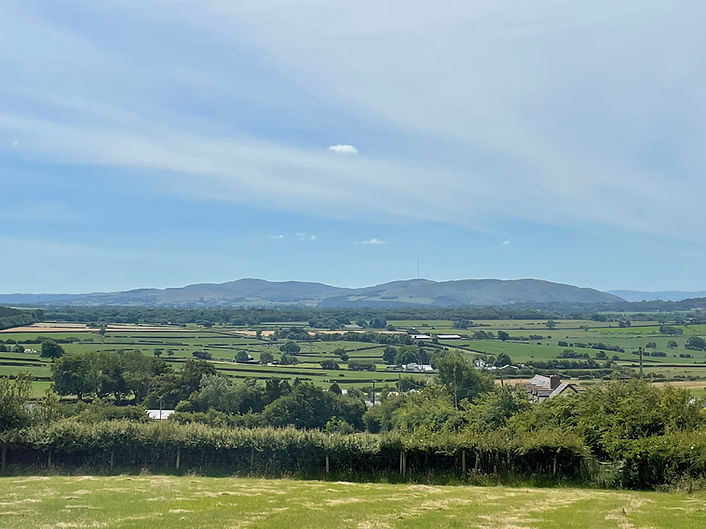
Llanasa parish rests within an ancient landscape, the fields dotted with the many remains of tumuli and cairns, part of what would seem to be a vast Bronze Age landscape, the importance of which is gradually becoming clearer. Axton, a little to the south of Llanasa, seems particularly favoured with these ancient burial mounds, with at least five within a small area centred on the road north, featuring heavily in the folklore of the area. And interestingly, the tumuli around Axton seem to have gathered about them a tradition of buried treasure beneath them - it is worth remembering the story of Twm y Pot Coch.
A story featured in Coelion Cymru, written by Evan Isaac in 1938, tells of a tumulus in Llanasa parish haunted by the ellyllon, goblins, tasked to guard the treasures within - and at this point one cannot but be reminded of the more famous Bryn yr Ellyllon, the site of the discovery of the Mold Gold Cape. Curiously, this ellyllon guarded tumulus in Llanasa parish was also said to have had a large standing stone upon it - a holed standing stone, to be precise, hence the name, Carreg-y-doll.
Holed stones are synonymous with much traditional lore, but do seem to be fairly rare in north east Wales. In Cornwall they would seem to be ten-a-penny plenty, where legend tells of them having healing qualities, a person crawling or being passed through the hole to gain freedom from skin complaints, rheumatism and so on. However, here in Llanasa parish, Carreg-y-doll would seem to have been the source of much fear within the local population, believed to harbour goblins and other evil, the locals giving the stone and mound a wide berth, even in daylight.
‘Ofnai’r plwyfolion y garreg hon gymaint fel nad ai neb heibio iddi ond o raid, hyd yn oed liw dydd.’
Evan Isaac, Coelion Cymru, (1938), p. 110
The tale as told suggests that on occasion, locals would muster enough courage to attempt to destroy the stone, only to be beaten back by terrible storms. It was a common enough belief that moving or damaging tumuli or the stones about them was likely to bring poor fortune and nightmares to those that attempted to do so, though Carreg-y-doll does seem to have been particularly irritated at such temerity.
After one such terrible storm of ‘fellt a taranau’, a man was walking by moonlight close to Carreg-y-doll - we are not told why. From the direction of the mound and stone he heard, of a sudden, a deep groan. Turning to look, he saw to his astonishment, a bright light above the stone and was stunned to stillness. From within the light two enormous bare arms reached out and grasped the man and pulled him into the darkness of the earth beneath the mound.
‘Cipiwyd ef ymaith, a chredai tra fu byw ei ddwyn i ryw wlad tan y ddaear’.
Evan Isaac, Coelion Cymru (1938), p. 110
The man was said to have arrived home some time later, though he had no recollection how he had done so, or indeed what had happened to him while in the earth, in the darkness beneath Carreg-y-doll.

The view from Carreg-y-doll across towards the Clwydians.
Evan Isaac tells us little as to the actual whereabouts of this mound and stone, other than it was somewhere in Llanasa parish. However, Ellis Davies, writing in 1949 tells us of many of the tumuli in Axton in some considerable detail. The most prominent, known as Axton V, sited within a field just off the Llanasa road (next to another mound named Axton IV, strangely enough) was said to have had, according to a native of Axton, a standing holed stone upon it, some 4 feet in height. A local by the name of Bennett Williams was said to tie his donkey to the stone to prevent it chasing grazing cows. This then would seem to be the site of Carreg-y-doll.
By the time of Davies’ first visit in 1922, the stone had been either removed or destroyed, possibly in or around 1900. It would seem that by the end of the 19th century the tale of Carreg-y-doll had lost its power, its terror. Still, perhaps it would be sensible to give the mound a certain space during inclement weather…
Further Reading
Davies, E, The Prehistoric and Roman Remains of Flintshire, Cardiff, (1949)
Isaac, E, Coelion Cymru, Aberystwyth, (1938)

